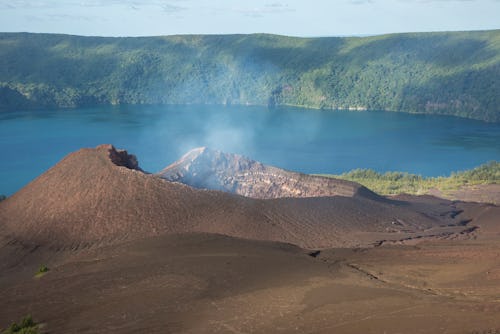The absolutely wild science behind the Tonga volcano eruption
A shock wave, a tsunami, and massive environmental changes — here are all the ways a single event is affecting the entire planet.

Over the weekend, the archipelago of Tonga shook the world, literally. That evening, the Hunga-Tonga-Hunga-Ha'apai volcano, located about 40 miles from Tonga itself, erupted. The activity, which had been bubbling up for weeks, resulted in the underwater volcano sending massive clouds of ash more than 12 miles into the air — and that was just the beginning of an event that is posed to have both devastating short- and long-term effects in the Pacific and around the world.
The explosion on Saturday night turned out to just be the first of several major eruptions. The next came Sunday morning, when another large blast of ash made its way to the main island of Tongatapu, blocking out the sun in the process.
On Tonga, the situation was dire. Ash and stone rained down on residents, many of whom were left trapped in traffic. Some fled to safety and sought out higher ground. But the effects were felt far beyond the Tongan islands. A shockwave from the island, traveling nearly at the speed of sound, according to National Geographic, was heard in New Zealand — 1,300 miles away from where the blast happened. Shockingly, the United Kingdom’s meteorology arm even picked up traces of the shockwave despite being located more than 10,000 miles from Tonga.
Then came the tsunami. It isn’t uncommon for a major volcanic explosion to cause subsequent events like tsunamis, as the blasts can result in sudden and fast-moving waves that end up battering nearby coastal regions. According to Scientific American, about a quarter of all deaths related to volcanic eruptions are caused by the ensuing tsunami.
In this case, Tonga’s island of Tongatapu bore the brunt of the damage. The tsunami waves measured nearly 4 feet tall and caused significant damage to the island, destroying homes near the shore and creating lots of debris. Some people are feared missing as a result of the disaster, and at least two people in Tonga have been declared dead.
Like the eruption before it, the tsunami managed to have an impact around the world. Waves from the event made their way to the Pacific Northwest, causing surges across the West Coast of the United States. While these waves were less damaging, they do help to illustrate just how dangerous the natural disaster was: If its effects can be felt thousands of miles way, just imagine how it must have felt up close.
The effects of the volcanic explosion likely won’t end there. Scientists have warned that Tonga is likely to experience acid rain for some time, as the volcano continues to release sulfur dioxide and nitrogen oxide. That will likely destroy crops and could create a food crisis for the country. It’s possible that the world might experience some cooling effect from the eruption, too — a somewhat common side effect of large volcanic explosions — but it’s unlikely to be significant enough to, say, change our climate crisis trajectory. It’s also possible that the explosion caused the ocean to oscillate, which explains in part how the tsunami’s effect was felt so widely.
It will likely be months before we know the full impact of the volcanic explosion near Tonga. The country is already dealing with the worst and most direct effects of it now, but these types of major events rarely are without ripples. Like the blast itself, the whole world will feel it all.